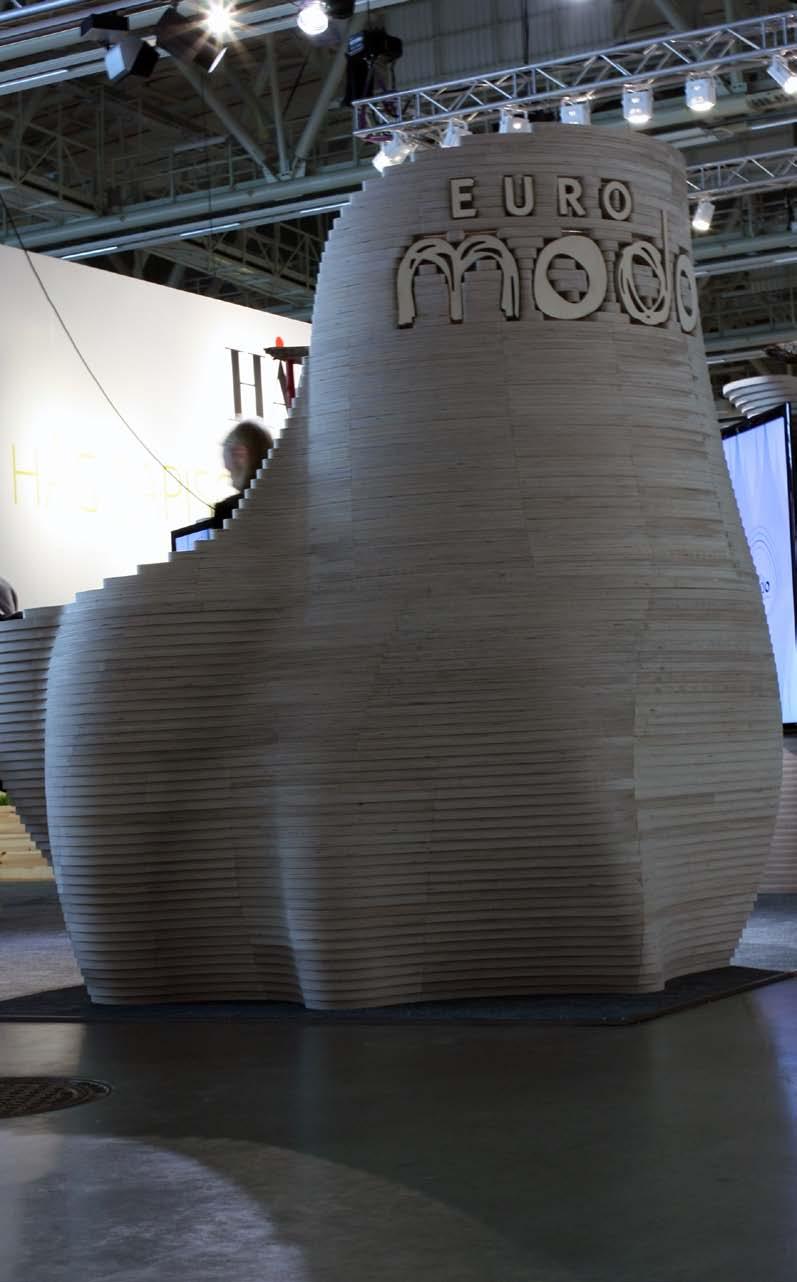
2 minute read
Breaking
boundaries at
Text: Satu Tähkä Translation: David Smith Photos: Ivanda Jansone & Niina Nissinen Illustrations: Walter Neto Video: Walter NetoHabitare The Modo design competitions have been organised since 2005. Euro Modo 2011 was broader than in previous years, involving foreign as well as domestic universities. Euro Modo 2011 ended at Habitare Fair on 14th September.
Advertisement
The Euro Modo stand in Habitare was a design feat by a group of eight design students. The ideas for the stand were driven by the question What is Design? explains Walter Neto, the man behind the exhibition design.
“Heikki Lindroos gave us the assignment to the EuroModo stand in February 2011 as part of an exhibition design course. Our task was to come up with a concept that would embrace not just the competition’s themes of Healing Environments and Wood, but also would explore the boundaries of the realm of design in a contemporary context.”
Strong, sensuous and unusual shapes
The exhibit collection was composed by the five finalists of Euro Modo 2011 competition. All exhibits needed to be interactive, so the stand team adopted the idea of an open area showroom, in which visitors were able to walk freely through the space and experience the objects. The stand itself was composed of four objects: three TV stands and a counter.
“On the TV stands, which we called Info Displays, information about the exhibits, KyUAS and EuroModo were shown. All of the stand objects where
The Counter was intended to be not just a counter but also a sign and a landmark of the exhibition to attract visitors and manifest EuroModo.
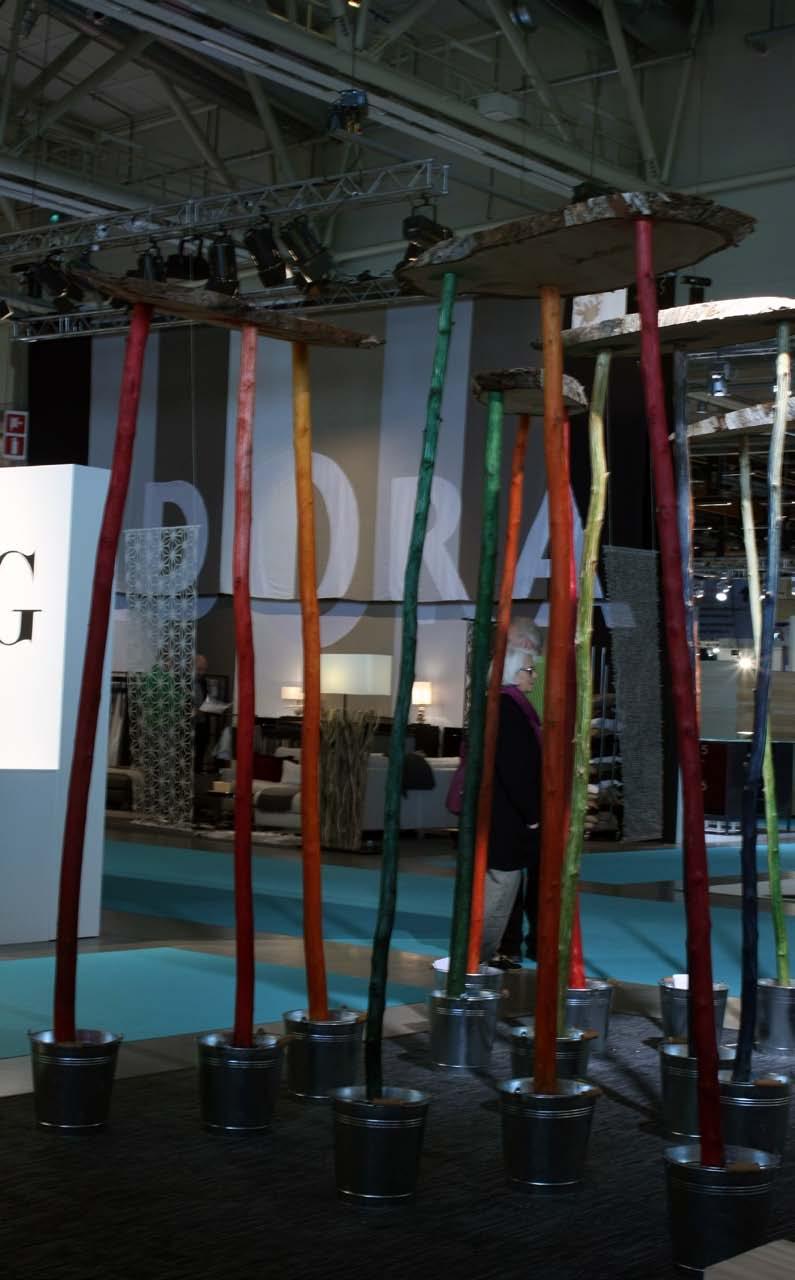
The info displays are composed by 312 pieces each. 3D model of the info displays can be seen at the next page.
designed in a Parametric/Algorithmic manner, for which I developed a generative model”, says Neto.
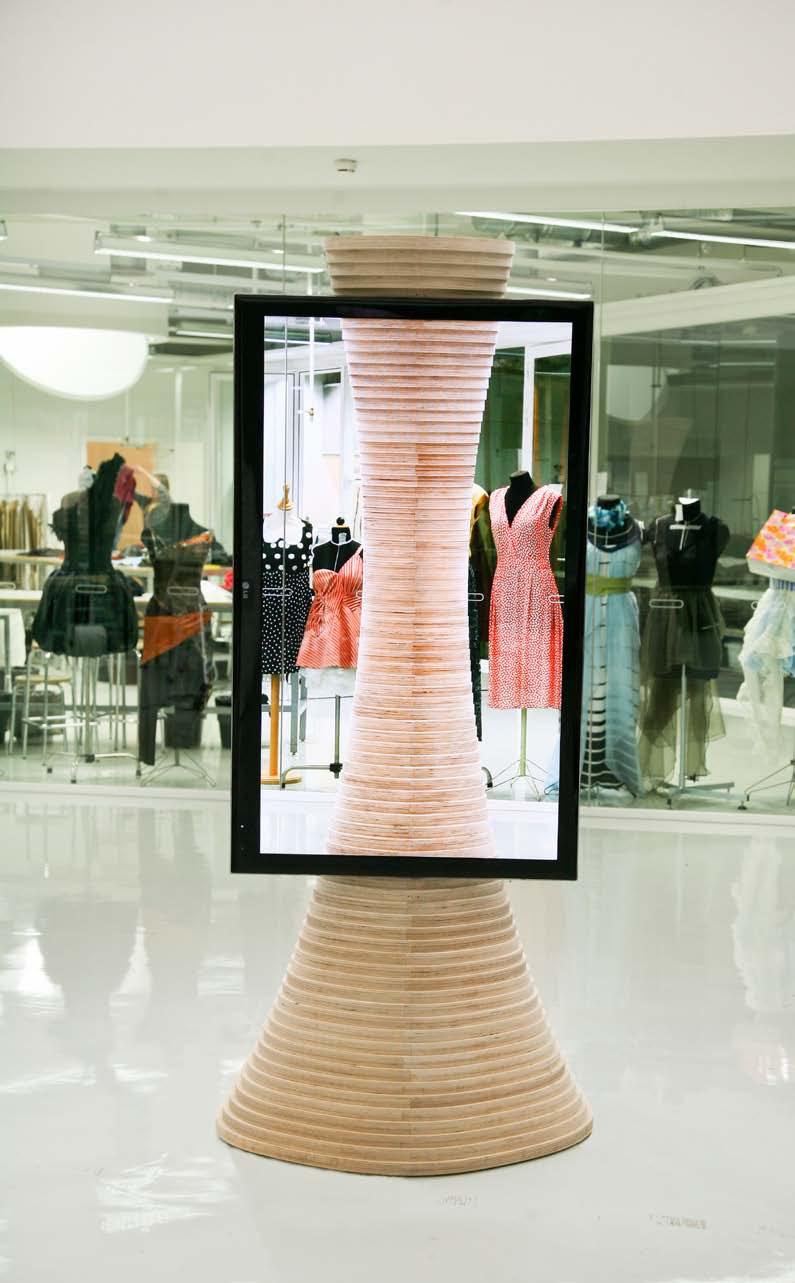
Captivating experience
The exhibit collection and the objects designed by the stand group attracted much attention from visitors and also companies, who may be prospective partners. Neto says that the several different ways in which wood was used and the unusual nature of the exhibits generated much curiosity.
“Visitors who entered the area took time to contemplate, touch, and play with the objects. We didn’t have chairs or tables, we had only objects with their own personality and their own proposal on how to help people to feel good. The greatest achievement was to see that children, young people, adults, and the elderly all enjoyed and complimented the pieces. I think that the goal was achieved.” □
In contrast with a normal 3D model, in this generative model, the object is thought as a system of relations between the overall form (which is incomprehensible by classic means) and the smallest particles (pieces or cells), and the relations between each cell and its neighbouring cells. More information:
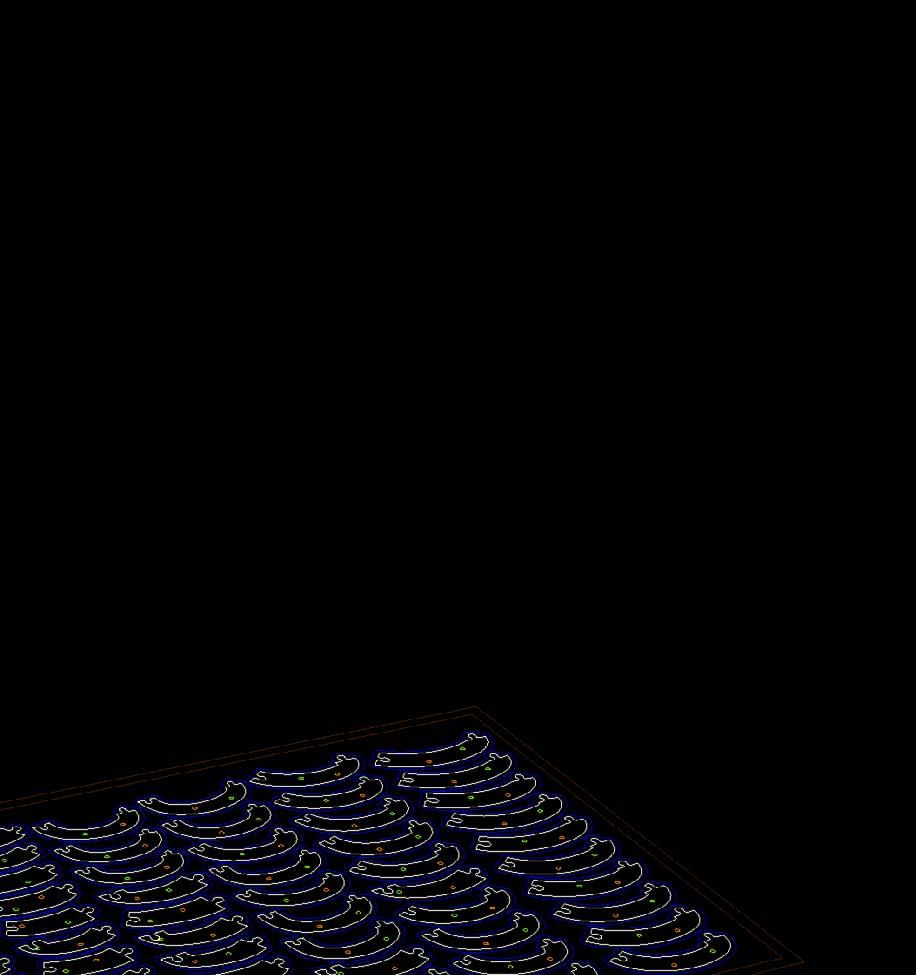
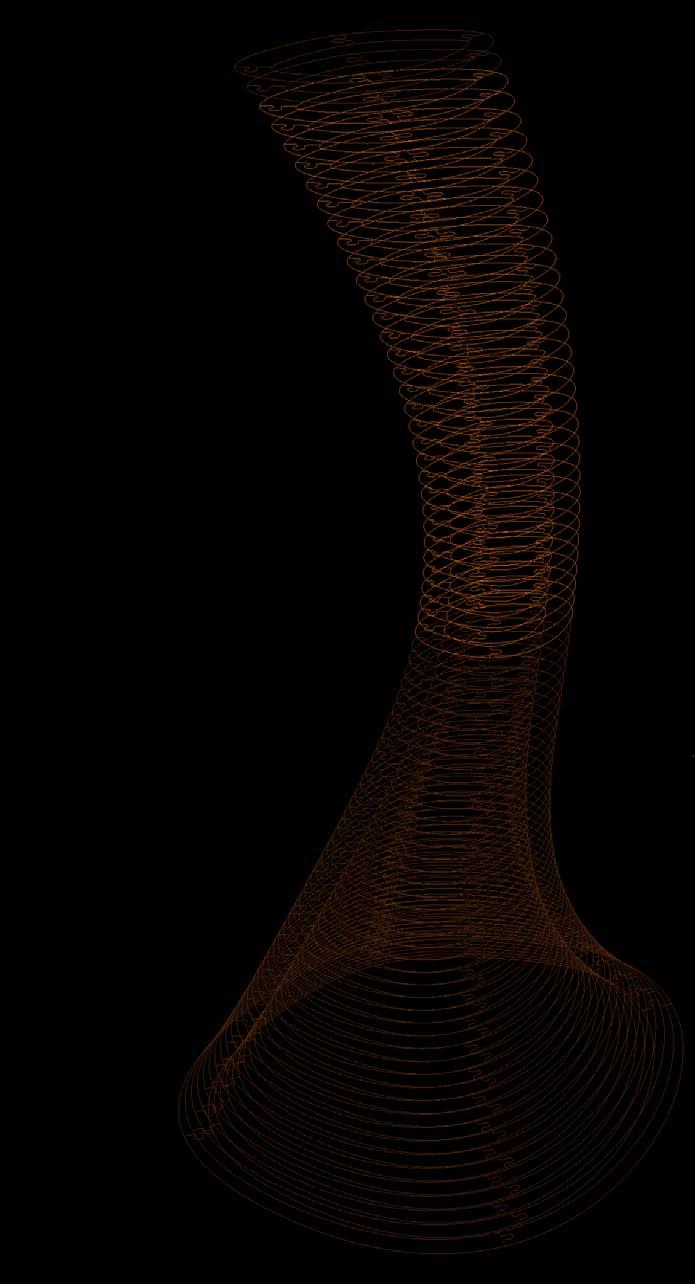
www.kyamk.fi/euromodo
Kymenlaakso University of Applied Sciences

